|
How to use:
- Select the units of measurements.
- Take your wing or entire airplan and align it in a right angle to a wall.
the leading edge of the center chord R is the datum for defining
the trapezoids
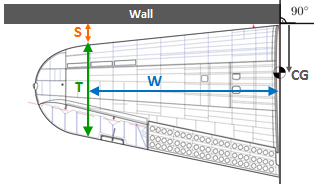
- Approximate your wing with max. 5 trapezoidal panel including
the panel within the fuselage - see examples:

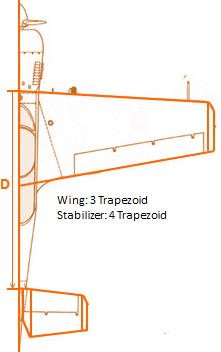
Grumman X-29 Sukhoi Su-29
- accurately measure chord (R & T), sweep (S) and panel span (W) of each trapezoid according
sketch on top.
Remark¹: for extreme wing dihedral (V-shape) or for all
V-Tail use the planform dimensions projected onto the horizontal
plane.
For a negative swept wing use negative values for S -
see Arcus example below.
- select the type of your tail (standard stabilizer, T- or
V-tail, canard, flying wing or delta) and repeat 2. to 4. for your
stabilizer.
Note: Use a "small stabilizer" when the tail
area is less than 10% of the wing area.
- measure the distance (D) from the leading edge (LE) of the main wing to
the leading edge of the stabilizer (see abouve).
- define the static margin.
- Select the Static Margin. We recommend:
12.5...5% when
considering the lift effect of the fuselage.
17.5...10% when
neglecting the fuselage.
- Define the fuselage dimensions and the type most closely fits
your fuselage shape. Insert the length WITHOUT propeller &
spinner.
For Delta, Wing and Canard designs the cuselage may
not be calculated/inserted.
- Plausability Check: A conventional monowing aircraft design results in
a CG between 25% and 38% MAC
Results:
- Your result contains ?? you are not logged-in as a member.
Login on the top or sign-up
for membership.
- Verify the wing and fuselage drawing does correspond to your airplane
- Verify the wing and tail span do match the span of your plane
- Verify the wing area corresponds to manufacturers information
- The Center of Gravity is measured in the middle of the
fuselage from the leading edge (LE) of the
main wing. Positive value are
towards the back, negative towards the front of the aircraft.
- Use a rather conservative CG value for inflight evaluation and
approch a lower static margin (decreased stability) in small
steps.
Other Examples: (Click on the examples for
calculation)
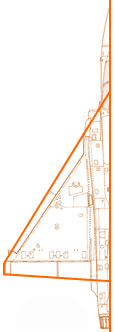
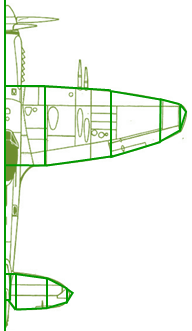
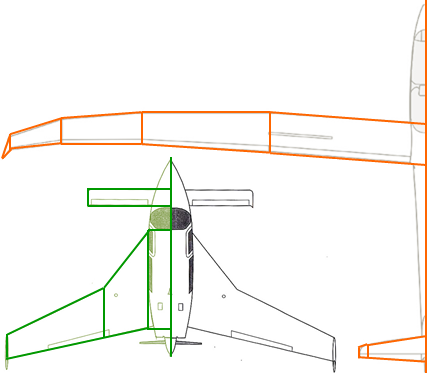
Mirage 2000
Spitfire Mk 47
Velocity XL
Arcus
|
|
Explanation:
It has been found both experimentally and theoretically that, if the
aerodynamic force is applied at a location of 25% of the Mean
Aerodynamic Cord (MAC), the magnitude of the aerodynamic moment
remains nearly constant even when the angle of attack changes. This
location is called the wing's Aerodynamic Centre (AC).
The AC value is always measured from the Leading Edge (LE)
in the center of the corresponding wing and includes the sweep at MAC
position.
The Neutral Point (NP)
of an aircraft is the point where the
aerodynamic forces are balanced. Having two or more wings interacting on your
aircraft (e.g. main wing and tail) they influence the aerodynamic forces to
your aircraft. The NP value is always measured from the leading edge
(LE) in the center of the main wing.
The «tail effectivness» influences
the NP position and does not only depend on it's size, but also it's
location relative to the main wing.
This must be estimated and
will be between 0.9 and 0.6 for a normal tail. The closer the tail to
the main wing wake or/and in disturbed air flow of a fat fuselage the
lower the tail effectivness gets - even down to 0.3 in extreme.
Some typical tail effectivness are listed:
T-Tail¹:
Select this option only if the tail is well outside
the main wing plane.
V-Tail²: project the V-Tail
onto the
horizontal plane and use the projected dimensions.
Flying Wings & Delta: Do not have a tail (second wing). Therefore Aerodynamic Center (AC)
and Neutral Point (NP) are identical.
Canard:
Although the stabilizer is in front of the main wing, the stabilizer
has to be defined as «tail» wing. However, make sure the Distance
between main wing and tail (stabilizer) is defined as a
negative value.
Warbird: Warbirds do have
tipically a tail effectivness of around 70...75%
The Center of Gravity (CG) is the
point where the aircraft's weight is balanced. The CG value is always
measured from the leading edge (LE) in the center of the main wing
respectively the leading wing for bi-planes.
For longitudinal
stability the CG is placed 5% to 15% of MAC in front of the NP. This
margin for stability is called Static Margin. A lower
static marging will result in less stability, a grater elevator
authority (agility) and a more «tail heavy» aircraft. But any CG byond
NP will lead to uncontrolable flight conditions and aircraft upset.
A
higher static margin creates more stability, less elevator authoritiy
(slugish pitch) and a more «nose heavy» aircraft. Too much static
margin may lead to an elevator stall unable to pitch the aircraft for
take-off or landing
For a
typical conventional monowing aircraft design the CG is between 25% to 38% of
MAC.
The Stabilizer Volume (Vbar) is a value for
maneuverability. The lower the more agile the aircraft gets. Typical
values are:
0.5...0.9 Trainer
0.3...0.6 Aerobatic
0.5...0.8 Glider
0.5...1.1 High-lift Jet
0.3...0.5 Combat
Jet
0.0 for Delta & Flying Wing (due missing
Stabilizer)
The
optimal Center of Gravity must be evaluated in flight. For safety
reason start
CG evaluation always in a conservative manner with a static margin of 15...5% for a good
longitudinal stability. Optimize CG in small steps only! Never
ever exceed the CG of cgCalc or manufacturer on maiden flight!
Consider Fuselage
Considering the impact of
fuselage is for conventional aircraft designs only. The
«Fuselage influence» MUST be a negative value! A positive
value indicates a destabilizing fuselage and the calculated CG value
is INVALID. Alternatively calculate your CG by neglecting the
fuselage.
For Delta, Wing
and Canar configuration the influence of the fuselage's lift may not
be calculated.
Save your project
Click the link right of
«Results». The page will be reloaded with your data entries. The URL
of the browser may now be saved in your browser favoties or you may
copy the URL to any other document.
Limitations - what does cgCalc
NOT do:
- cgCalc
does not provide aerodynamic performance analysis.
- Propulsion and aeroelasic effects on incidence and dynamic
stability are not covered.
- Canard: For canard configuration the stabilizer is significant
smaller than the main wing. For tandem wings use the «std
stabilizer» option.
- neglecting Fuselage:
cgCalc
does not take into account the lift effect of fuselage for
conventional aircraft designs only. When neglecting the fuselage
and having
a fat fuselage in front the main wing, use an additional 5 to 8% static
margin (see Sukhoi example uses rather 15% than 10% static margin).
cgCalc does
not take into account a long stem of the fuselage
(e.g. airliner). These lead to a considerable forward displacement
of the CG. Ignore the results of
cgCalc in
these cases.
- considering Fuselage:
cgCalc
does take into account the lift effect of fuselage for conventional
aircraft designs only. However, keep in mind this will correct the
fuselage lift effect only roughly for none-fancy fuselage.
- Jets with intake below or ahead of the wing or twin
aircraft with wide nacelles do have a significant destabilizing
effect and is not taken into account by
cgCalc.
- Usage on own risk - we reject any liablility.
cgCalc is
based on Simon's equation with his guidance for estimated de/da.
|
Center of gravity vs. Decalage
We hear the
following question over and over again:
"I have been using eCalc
for a long time and have now become aware of cgCalc. My question - the
center of gravity depends on the Decalage, but I can't find it in
cgCalc. But for a large glider model this is of interest - will there
be an addition?"
In some (online) discussions the impression is
given that C.G. position and decalage (angle of attack difference btw.
wing and stabilizer) have the same relevance for flight
characteristics.
This article (sorry german only) is about exactly this widespread
misunderstanding. |
|
Briefly summary:
The CG determines the flight characteristics
(stability) and thus influences the trim of a stable flight condition.
For its part, the decalage is used exclusively for trimming, which
neutrally trims your flight model to a desired and specific air speed.
The decalage has an important significance, because its misalignment
can quickly lead to an unmanageable model, which is equivalent to a
complete "out of trim" situation. However, it has no influence on the
flight characteristics, which are based on the stability reserve of
the center of gravity. |